You are here
The aristocratic grave at Warcq (Ardennes): an exceptional Gallic chariot grave
A combined team composed of archaeologists from the Ardennes departmental archaeology unit and from Inrap has just finished excavating the aristocratic Gallic grave at Warcq (Ardennes). Curated by the State (Drac Champagne-Ardenne), this site was part of the investigation of the route of the A304 motorway being constructed by the Dreal between Charleville-Mézières and Rocroi.
This type of aristocratic grave, containing a ceremonial or war chariot, emerges in the 7th century B.C. and disappears with the end of the Gallic period. Champagne-Ardenne is famous for such funerary practices, which are generally dated to the start of the second Iron Age (5th-4th century B.C.).
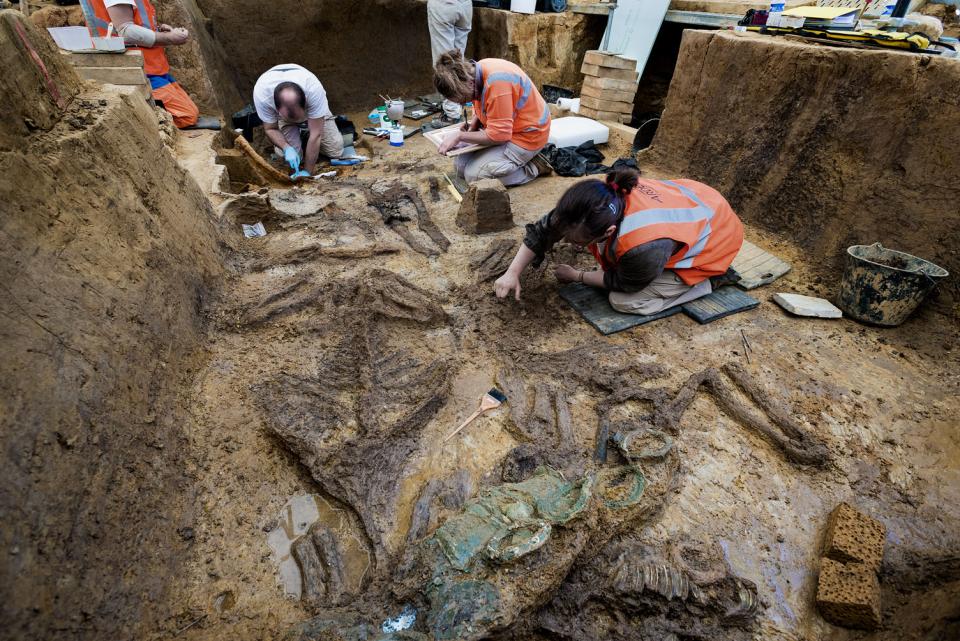
The deceased, his chariot, his horses and a rich set of artefacts...
One of the most spectacular elements was the burial of four horses: two in the south west and north west corners and two in front of the chariot, beneath the yolk. The deceased person, most likely a man, was lying on the body of the chariot. An unusual gold collar, probably on a leather or wooden frame, was still around his neck. A fibula was inserted into his garments. A bent sword scabbard, a pair of shears and an iron razor were lying alongside him.
Three pottery vases had been crushed when the chamber ceiling collapsed. Finally, one of the food offerings was constituted by a pig.
Everything here indicates that this was an extremely elaborate, very spectacular funeral, some aspects of which are very uncommon in chariot graves in Champagne. These include the presence of four horses, but also that of a sword scabbard folded in half, a practice common in Celtic graves in northern Italy but very little attested in Gaul.
One of the vases discovered, which has a baluster shape, bore a geometrical decoration probably created with tin and of which no other example has yet been found in France. Before archaeologists have even begun to define the exact chronology, a number of indicators enable the Warcq chariot grave to be attributed to the late 2nd or early 1st century B.C. (La Tène D1), a period in which this method of inhumation had all but disappeared.
The Ardennes departmental archaeology unit
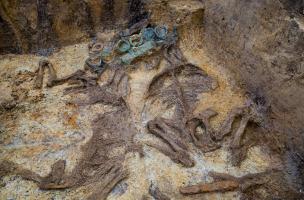
Two horses buried in the grave
© Denis Gliksman / Inrap
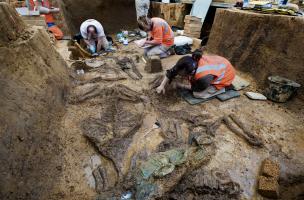
The chariot tomb at Warcq in the process of excavation
© Denis Gliksman / Inrap
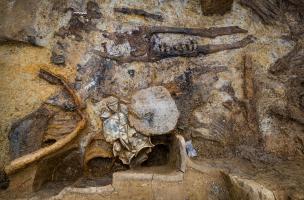
The aristocrat on his chariod and some of the objects accompanying him to the hereafter
© Denis Gliksman / Inrap
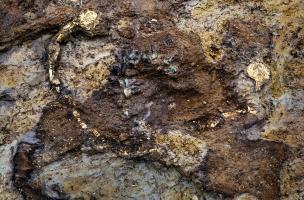
Gold collar
© Denis Gliksman / Inrap

Exposing the gold collar
© Denis Gliksman / Inrap

Rein rings lying on one of the horses
© Denis Gliksman / Inrap
vincent.charpentier [at] inrap.fr

